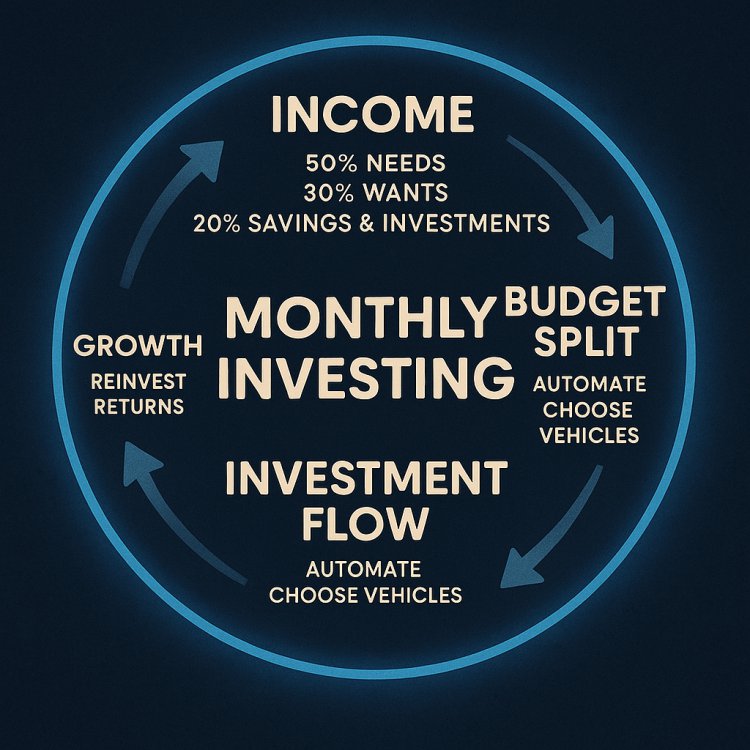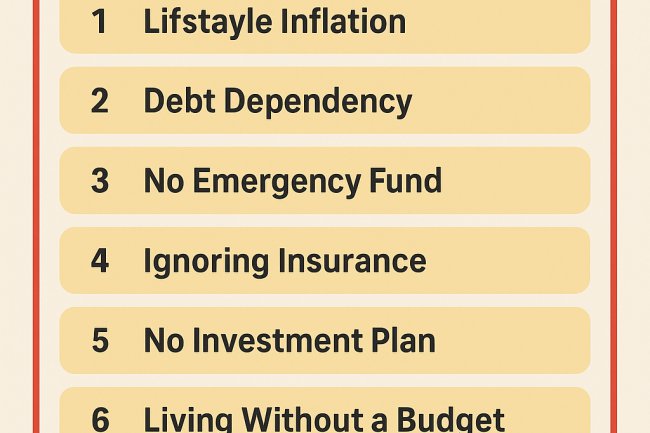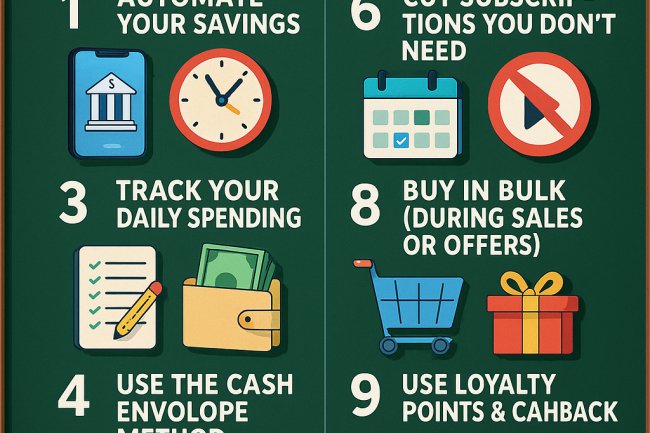How to Invest Monthly Using a Budget System (B.S.)
Learn how to invest monthly using the 50/30/20 budget system. Discover how to automate savings, choose smart investment vehicles, and build long-term wealth on any income.

Because wealth isn’t built in a day — it’s built every month.
Introduction: The Power of a Monthly Investment Habit
Wealth doesn’t come from big, one-time investments.
It comes from small, consistent ones — repeated every month with discipline.
Whether you earn $500 or $5,000 a month, the secret is structure. You don’t need more money to invest — you need a Budget System (B.S.) that ensures your money flows where it matters most.
When you organize your income wisely, investing becomes automatic, not emotional.
Here’s how to start investing monthly using a smart, balanced money plan.
1. Start With Structure — The 50/30/20 Framework
A good budget gives every dollar a purpose.
The simplest system divides your monthly income into three categories:
| Category | Purpose | Example Allocation |
|---|---|---|
| 50% Needs | Rent, groceries, transport, bills | 50% |
| 30% Wants | Leisure, hobbies, entertainment | 30% |
| 20% Savings & Investments | Wealth building and security | 20% |
That last 20% is your wealth engine — the part that builds your future.
This balance ensures you invest without guilt, chaos, or financial stress.
2. Automate Your Investment Flow
The biggest reason people fail to invest consistently is inconsistency itself.
The solution? Automation.
As soon as your paycheck arrives:
-
Transfer your savings and investment portion immediately (before spending).
-
Use automatic transfers or recurring deposits if your bank or app allows it.
-
Treat investing as a monthly bill you pay to yourself.
When you automate, you remove temptation and guarantee momentum.
“Consistency beats intensity — in fitness, in business, and in investing.”
3. Choose Monthly-Friendly Investment Options
Depending on your goals and risk tolerance, you can divide your monthly investments into tiers:
Low-Risk / Stable Options
-
Money Market Funds (MMFs): Ideal for short-term savings or emergency funds.
-
Government Bonds and Bills: Reliable, fixed returns with low risk.
-
High-Yield Savings Accounts: Earn steady interest while keeping your money liquid.
Moderate-Risk / Growth Options
-
Index Funds and ETFs: Diversified exposure to global markets.
-
Mutual Funds: Professionally managed portfolios for hands-off investors.
-
Dividend Stocks: Regular income plus long-term appreciation.
High-Reward / Entrepreneurial Options
-
Real Estate Investment Trusts (REITs): Property exposure without owning buildings.
-
Digital Investments: Fintech platforms, global ETFs, or fractional shares.
-
Business Ventures or Side Projects: Reinvest part of your income into your own skills or startup.
The key is to pick what fits your lifestyle and automate small, regular contributions.
4. Use the “Mini Ladder” System
A smart way to structure your monthly 20% investment portion is through a ladder system — spreading funds across liquidity, growth, and learning.
| Sub-Category | Purpose | Suggested Allocation |
|---|---|---|
| Short-Term Safety | Emergency fund, MMF | 5% |
| Long-Term Growth | ETFs, Bonds, Real Estate | 10% |
| Self-Investment | Courses, skills, certifications | 5% |
This gives you a balance between security, growth, and self-development — the real wealth trio.
5. Start Small and Stay Consistent
You don’t need to wait until you earn more.
Start now, with what you have.
If you earn $3,000 per month:
-
$1,500 for needs
-
$900 for wants
-
$600 (20%) for investments and savings
Then divide your $600 like this:
-
$150 → Emergency fund or MMF
-
$300 → ETF or index fund
-
$150 → Self-education or business investment
It’s not the amount — it’s the habit that matters most.
6. Track Your Progress Every Month
Use a spreadsheet or an app to monitor:
-
How much you invest monthly
-
Your portfolio growth
-
Dividends or interest earned
This builds awareness and motivation.
Seeing progress (even small) reinforces discipline — and discipline compounds into wealth.
7. Reinvest Your Returns
Once your investments begin to earn, don’t withdraw the profits.
Reinvest them automatically.
That’s how compounding works — your money begins earning on top of your previous earnings.
It’s the difference between saving and wealth building.
“At first, you work for money. Later, your money works for you.”
8. Review and Adjust Quarterly
Every few months, check your progress.
-
Are you hitting your savings targets?
-
Can you increase your investment percentage?
-
Are your investments aligned with your goals?
If your income grows, increase your savings rate — not your lifestyle expenses.
This single habit is how ordinary earners become long-term investors.
9. Invest in Knowledge Along the Way
Your most valuable investment is always you.
Read books, take courses, listen to financial podcasts, and follow credible experts.
Understanding how markets and money work gives you an edge that no one can take away.
The wealthiest people in the world share one trait: they’re constant learners.
10. Play the Long Game
Monthly investing is not about getting rich overnight.
It’s about becoming unbreakable over time.
Wealth builds quietly, then suddenly.
The day you stop chasing quick wins and start trusting long-term systems — that’s the day you step into true financial freedom.
Example: A Realistic Monthly Investment Plan
Income: $4,000
Investment Goal: 20% ($800 per month)
| Investment Type | Amount | Objective |
|---|---|---|
| Emergency Fund / MMF | $200 | Liquidity & safety |
| ETFs / Index Fund | $400 | Long-term growth |
| Skill Development | $200 | Self-improvement |
After 12 months:
-
You’ve invested $9,600.
-
You’ve built savings, returns, and personal growth — all at once.
It’s simple. It’s sustainable. And it’s scalable.
Conclusion: Build the Habit, Not the Hype
You don’t need luck, timing, or insider secrets to invest.
You just need a monthly plan that runs automatically — and a mindset that stays patient.
Start small, automate early, and stay consistent.
Because real wealth isn’t built by those who make the most.
It’s built by those who manage the best.
What's Your Reaction?




















